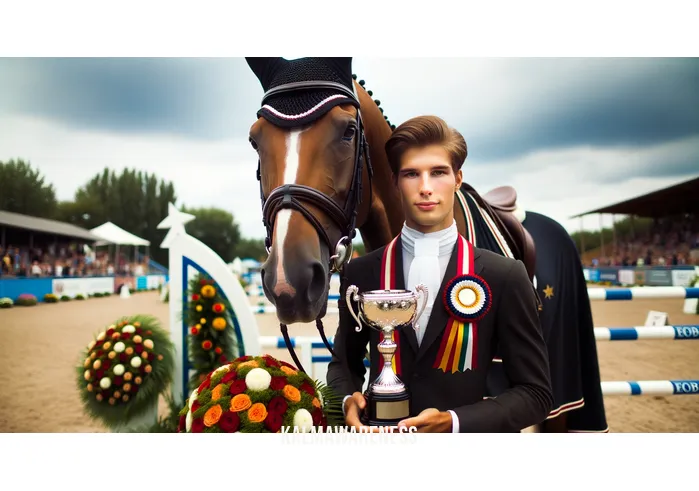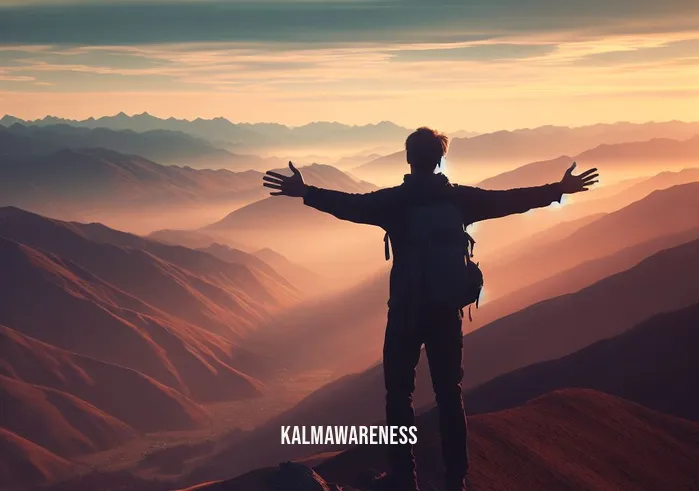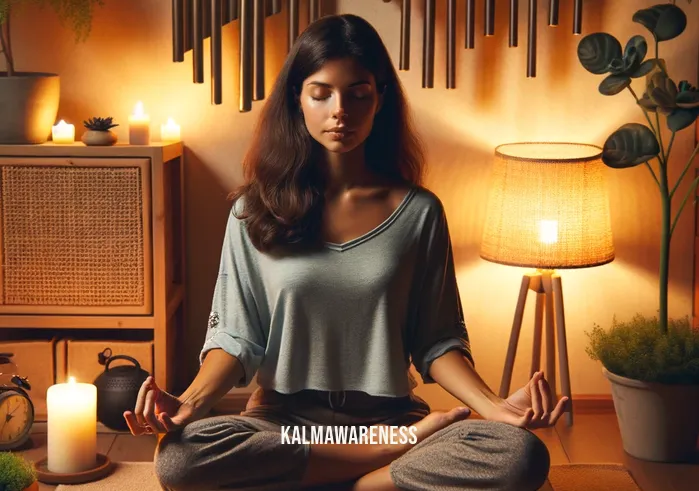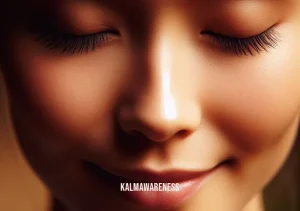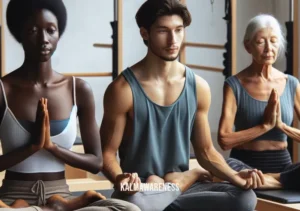Riding is an Exercise of the Mind: Discovering Equestrian Mindfulness
Horseback riding, often romanticized in movies and literature, has more depth than mere transportation or sport. At its core, riding is an exercise of the mind. It’s a symbiotic dance between two living beings, each with its thoughts, emotions, and physical reactions. This unique bond gives rise to a multitude of mental and emotional benefits, drawing parallels to mindfulness practices seen in various healing and self-awareness techniques.
Equestrian Mindfulness: Riding in the Moment
At the heart of equestrian activities lies mindful horseback riding. Just like the teachings of mindful healing, riding requires one to be completely present. The rider must be attuned not just to their actions and thoughts, but also to the subtle cues given by their equine partner. This deep connection and immediate feedback from the horse forces riders to be fully immersed in the present moment—a core principle of mindfulness.
The Mind-Body Connection
When on horseback, the synchronization of the mind and body becomes evident. Every thought and movement directly impacts the horse’s response. This intertwining of emotions and physical actions can be likened to the concepts discussed in the mindful dog training and the meditating on words of power. It’s about being in tune with oneself and one’s environment, creating a harmonious flow of energy. Such experiences are not just therapeutic; they can be transformative. By understanding and mastering this connection, riders can gain insights into their inner selves and achieve greater emotional and mental equilibrium.
Equine Therapy: Healing Through Horses
It’s no surprise that horses have been incorporated into therapeutic practices. Equine therapy is a testament to the healing power of these majestic creatures. They act as mirrors, reflecting our emotional states and thought patterns. This method of therapy helps individuals confront and address personal challenges in a supportive environment, much like the comforting approach of the HUG method. This profound interaction offers not just mental relief but also promotes physical healing, shedding light on the spiritual meaning of lower back pain and other related discomforts.
Concentration, Categories, and Creativity
Delving into the intricacies of riding, we find a myriad of ways the activity hones our concentration. From understanding a horse’s gait to maneuvering through obstacles, the rider’s focus is paramount. This concept is closely tied to the discussions on focused minds. Similarly, categorizing the various skills and techniques required in riding can ignite creativity, reminiscent of the inspiration derived from the Dhyani Mudra.
Riding Forward
To truly appreciate the depth and breadth of equestrian mindfulness, one must delve deeper into the myriad of benefits it offers. It’s more than just a sport or a pastime—it’s a journey of self-discovery, self-healing, and self-awareness. Much like the profound insights shared by Bruce Lee about martial arts, riding transcends its physical bounds to become a spiritual and mental exploration.
In the upcoming segments, we will further explore the nuances of the mind-body connection, delve deeper into the transformative power of equine therapy, and uncover the layers of concentration, categories, and creativity that make riding such an enriching experience.
Eager to dive deeper into this enlightening journey? Continue reading in the next segment, where we’ll explore these topics with greater depth and insight.

The Cognitive Cadence of Horseback Riding: Beyond Physical Exertion
When one thinks of horseback riding, images of vast landscapes, the rhythmic trot of the horse, and the wind against one’s face might come to mind. However, beneath the surface, riding is an exercise of the mind just as much as it is of the body. To further explore this idea, let’s delve deeper into the cognitive aspects of equestrian activities and how they transcend mere physical exertion.
Cognitive Benefits: More than Meets the Eye
Heightened Awareness: Just as meditating with words of power sharpens one’s focus, riding requires riders to be acutely aware of their surroundings. The need to anticipate and respond to the horse’s movements ensures a heightened state of alertness.
Emotional Intelligence: As touched upon in the mind and the brain: neuroplasticity and the power of mental force, the ability to read and react to emotions is a skill. Interpreting the horse’s mood and reactions develops this intelligence in riders.
Problem-Solving Skills: Equestrian challenges, be it in competitive arenas or trail rides, necessitate quick thinking and adaptability, much like the warrior brain approach.
Memory Enhancement: Memorizing routines, courses, and techniques contribute to better cognitive retention.
Mindfulness and Presence: Just as the belly rules the mind, the act of riding forces riders to be in the moment, fostering a sense of mindfulness.
Riding’s Impact on Different Aspects of the Mind
To provide a clearer picture, let’s categorize riding’s cognitive benefits in a table format:
| Aspect of the Mind | Impact of Riding | Analogous Mindfulness Practice |
|---|---|---|
| Perception | Enhances sensory awareness | Heart and brain coherence with Joe Dispenza |
| Emotional Resilience | Fosters patience and understanding | Easing pain through mindfulness |
| Focus | Sharpens concentration and reduces distractions | Mindful exercises |
| Memory | Boosts retention and recall | Focused thinking practices |
| Creativity | Encourages novel approaches to challenges | Teddy bear yoga and imaginative exercises |
Bridging the Gap: The Symbiosis of Mind and Body
The notion that riding is an exercise of the mind resonates deeply with the teachings of Rodney Yee’s daily yoga. Both practices emphasize the symbiotic relationship between the mind and body. Riding doesn’t just demand physical prowess but requires an equally strong mental game. Riders must be in harmony with their thoughts and emotions, for any disconnect can directly impact their performance and rapport with the horse.
In essence, riding teaches us the art of synchronicity. It’s about merging the cognitive with the physical, understanding that every physical action stems from a thought, and every thought can elicit a physical response. This delicate dance of the mind and body, intrinsic to equestrianism, offers riders invaluable lessons that can be applied to various facets of life.
As we journey further into the world of equestrian mindfulness, we’ll explore the transformative power this practice holds and how riders around the world have harnessed it for personal growth. From stories of triumph to tales of introspection, continue reading in the next segment to uncover the profound impact of acknowledging that riding truly is an exercise of the mind.
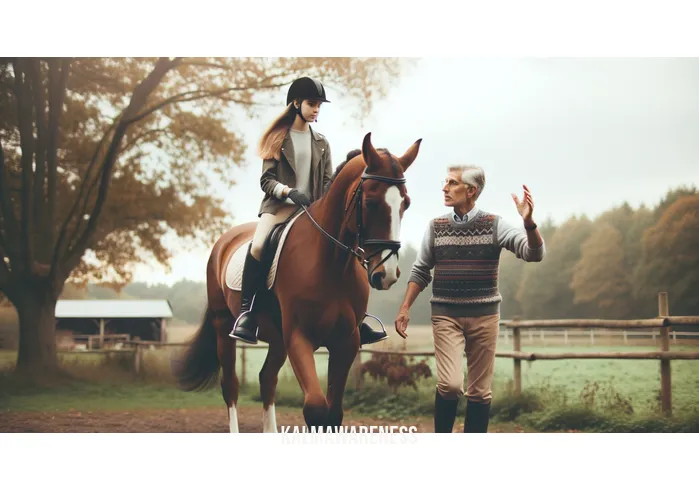
Equestrian Epiphanies: How Riding Illuminates the Mind’s Horizon
The power of horseback riding extends far beyond the saddle and into the deepest crevices of our psyche. Riding is an exercise of the mind, an activity steeped in the traditions of mindfulness and self-awareness. It’s where countless riders have found solace, purpose, and, more crucially, inspiration. As we journey through the myriad ways equestrian endeavors have lit up lives, it becomes clear that horses aren’t just companions but conduits of hope.
Whispers from the Wind: Resounding Quotes
“In riding a horse, we borrow freedom.” – Helen Thomson
This quote reminds us of the spiritual meaning of lower back pain, where we’re encouraged to free ourselves from the burdens we carry. Just as riding provides an escape from physical confines, it also offers a respite for the mind.
“The essential joy of being with horses is that it brings us in contact with the rare elements of grace, beauty, spirit, and fire.” – Sharon Ralls Lemon
Echoing the sentiments of mindful healing, this quote emphasizes the spiritual transcendence that comes with equestrian activities. Riding becomes a medium to connect with the world and oneself on a deeper level.
“A horse doesn’t care how much you know until he knows how much you care.” – Pat Parelli
This quote mirrors the tenets of hug method shifting. The sentiment underlines the importance of emotional intelligence, empathy, and genuine care in any relationship, whether with a horse or fellow human.
Tales of Triumph: Real-life Inspirations
Sarah’s Awakening: Sarah, an accomplished lawyer, found herself buried under stress and anxiety. Her saving grace? A horse named Atlas. In Atlas, Sarah discovered not just an animal but a mirror reflecting her inner turmoil. The process of learning to ride and sync with Atlas, echoing back pain meditation, taught her to connect with her inner self and find her balance, both on and off the saddle.
Miguel’s Renewed Purpose: A retired veteran, Miguel grappled with the haunting memories of war. Discovering horseback riding as therapy became his turning point. The focus required in riding, akin to the Dhyani Mudra practice, helped Miguel channel his energy positively, making peace with his past.
Aria’s Dance with Destiny: A dancer by profession, Aria’s life took a tragic turn when a car accident left her with limited mobility. Undeterred, she turned to horseback riding. As she forged a bond with her horse, Luna, she rediscovered her rhythm. This journey reflects the teachings of Bruce Lee’s meditation, where adapting to circumstances and flowing like water can lead to new avenues of inspiration.
Riding Towards Tomorrow
The intricate dance between a horse and rider, the melding of two spirits, is a testament to the mind’s resilience and capacity for growth. Riding is not just an activity; it’s an act of self-discovery, a gateway to inner peace, and a beacon of hope.
With every stride and every trot, riders immerse themselves in a world where the boundaries between the mind and body blur, offering glimpses of what lies beyond. As we gear up to explore how this equestrian exercise paves the path for a deeper mind-body connection in the next segment, remember that every ride is a step towards enlightenment. The journey continues, so saddle up and keep reading.
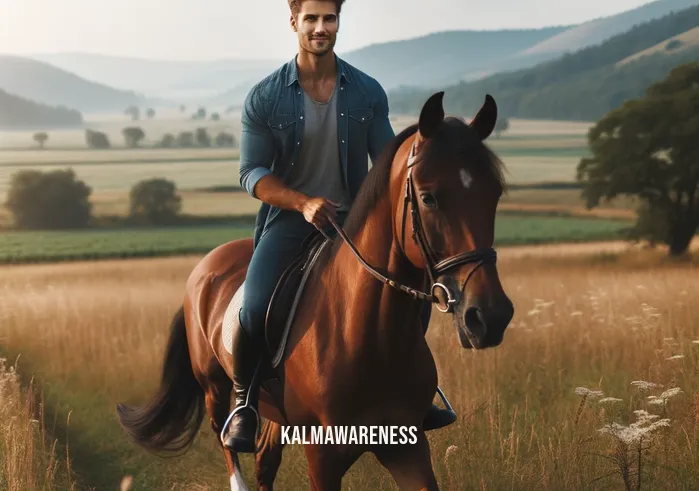
The Nuances of Neural Horsemanship: Deconstructing the Mindful Ride
For many, horseback riding seems merely a physical activity; but at its core, riding is an exercise of the mind. As we’ve journeyed through the significance and inspiration that riding brings, it’s time to delve deeper into the facets that make this activity a cognitive marvel. Let’s break it down point by point.
Core Components of Equestrian Mindfulness
Presence and Awareness: At the crux of riding is the requirement to be fully present. This ties in with the core principles of meditating on words of power, where riders must tune into their surroundings and their equine partners.
Synchronization of Intentions: A rider’s intentions must mirror that of the horse. This mutual understanding reflects the teachings of mindful dog training, emphasizing empathy and connection.
Emotional Regulation: Riding requires keeping one’s emotions in check, a practice akin to the heart and brain coherence explained by Joe Dispenza. An agitated mind can easily unsettle a horse.
Physical and Mental Harmony: This duality, resonating with the mind and the brain’s balance, underscores that riding isn’t just about physical prowess but also mental stamina and agility.
Benefits of a Mindful Ride
Improved Concentration: Just as focused minds yield clarity, riding hones one’s ability to concentrate on the task at hand.
Elevated Self-awareness: As with teddy bear yoga, where mindfulness is key, riding accentuates a rider’s understanding of their strengths and limitations.
Stress Reduction: The rhythmic movement of a horse can have a calming effect on the rider, much like the tranquility achieved through Rodney Yee’s daily yoga.
Enhanced Emotional Intelligence: Engaging with a sentient being like a horse inevitably sharpens one’s emotional understanding, a core component of the belly ruling the mind.
Physical Benefits: Riding isn’t just a cerebral activity. It offers an array of physical benefits, from improved posture to core strength, reminiscent of the lessons learned from mindful sould practices.
Riding: More Than Just A Sport
Indeed, horseback riding transcends the realm of mere sports or hobbies. It’s an immersive experience that engages the rider both physically and mentally. With every trot, canter, or gallop, the rider is not just moving forward in space but also in understanding, self-awareness, and mindfulness.
As we approach our final chapter, anticipate a culmination of all the insights garnered, wrapping up our exploration of why horseback riding truly is an unparalleled exercise of the mind. The journey may be nearing its end, but the revelations and reflections it offers will stay with us for a lifetime. Keep reading, as the best is yet to come.

Reflecting on the Ride: The Cognitive Symphony of Equestrianism
Our exploration into the multifaceted world of horseback riding is drawing to a close. As we reins in our thoughts, it becomes clear that riding is an exercise of the mind in more ways than one. It’s not merely about mounting a horse and guiding it through various terrains but a profound journey of mutual respect, understanding, and growth.
A Journey Revisited
Let’s briefly trot down the memory lane of our exploration:
- We commenced by understanding the intrinsic bond between rider and horse, and how it mirrors the principles seen in mindful healing.
- Diving deeper, we recognized the nuanced balance of mental and physical engagement, akin to the serene practice of Dhyani Mudra.
- Inspiration led us to real-life tales that underscored the hope embedded in each ride, a sentiment resonating with the healing tales from spiritual meanings behind pains.
- Breaking it down, we enumerated the core components and benefits, emphasizing that horseback riding is as much an activity of the brain as it is of the body, a philosophy echoed by the warrior brain teachings.
From the Saddle to the Soul
What we’ve unearthed is that riding stretches beyond a mere sport. It’s a dance, a dialogue, a duet between two beings. It demands physical agility, yes, but it equally necessitates mental acuity. Whether you’re navigating the nuances of back pain meditation or the depths of horseback riding, both require an awareness that is both introspective and expansive.
Your Next Canter
If this journey has spurred your interest, I implore you to explore more avenues within our magazine. Each article, each exploration, is crafted with the same dedication and depth as this one. And if there are moments of uncertainty or the need for clarity, gallop back to previous sections; they’re designed to guide and enlighten.
A Heartfelt Thank You
To our esteemed readers, thank you for trotting alongside us on this expedition. Your engagement and curiosity are the wind beneath our editorial wings. Rest assured, as you flip the pages of our future editions, you will be greeted with content that intrigues, informs, and inspires.
Until our next rendezvous, keep riding the waves of curiosity and exploration. For every stride you take, whether on horseback or in the pursuit of knowledge, remember that it is, at its heart, a cherished exercise of the mind.
